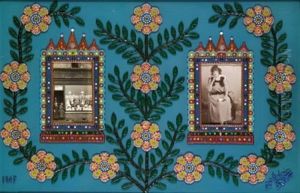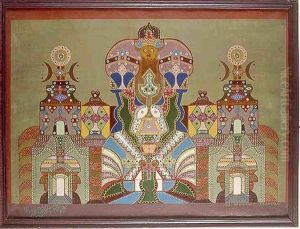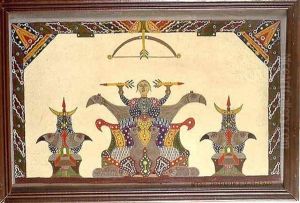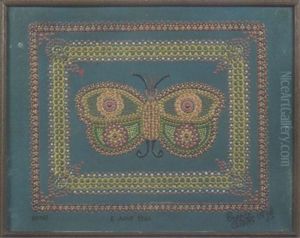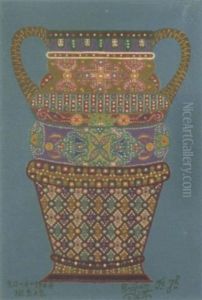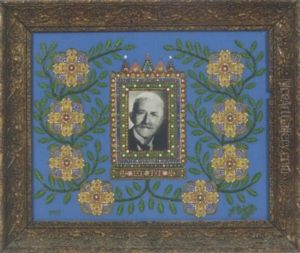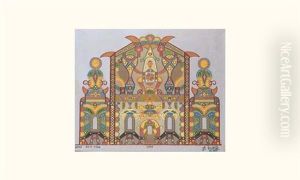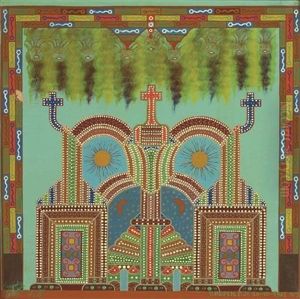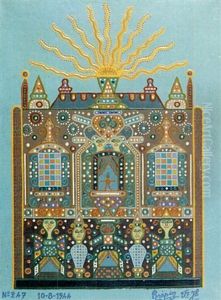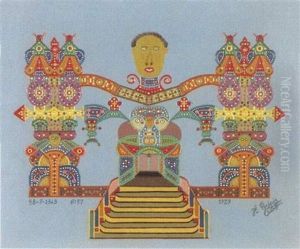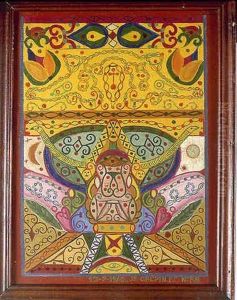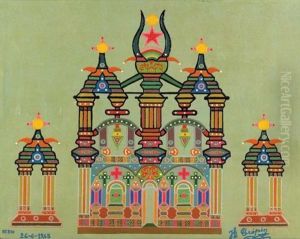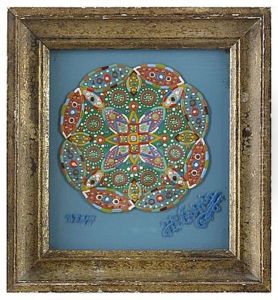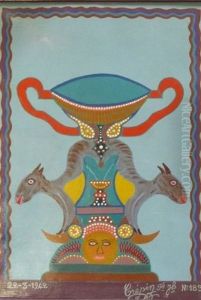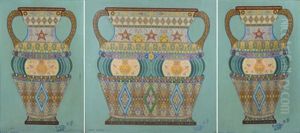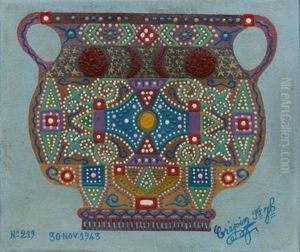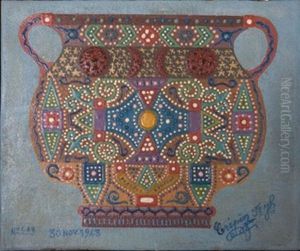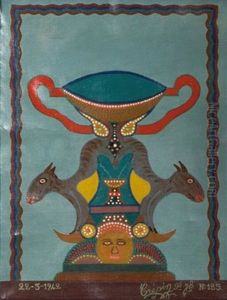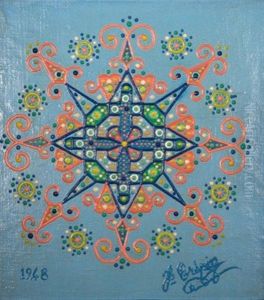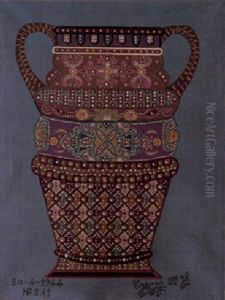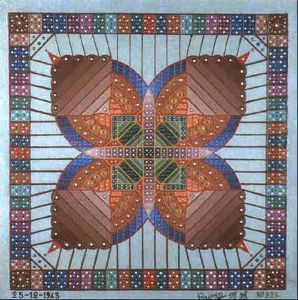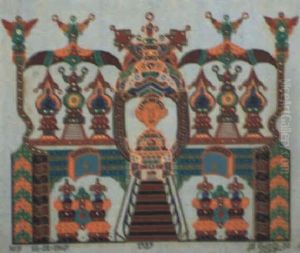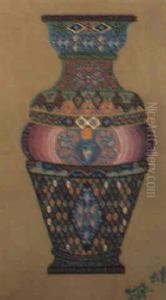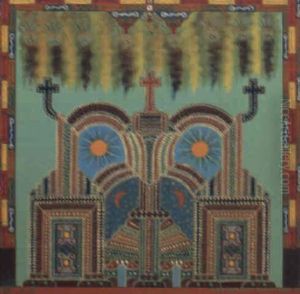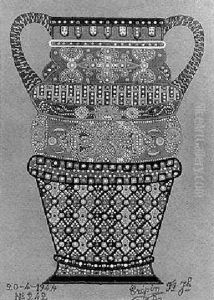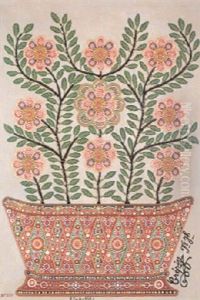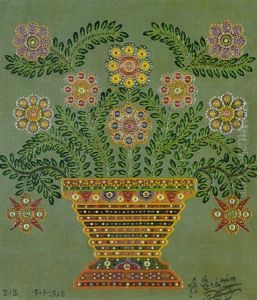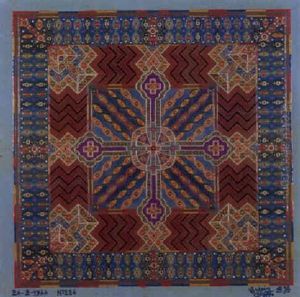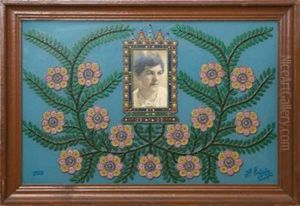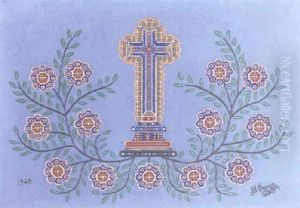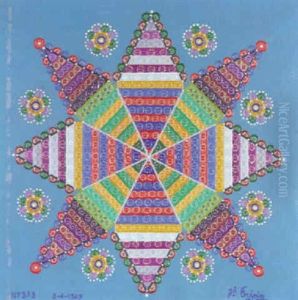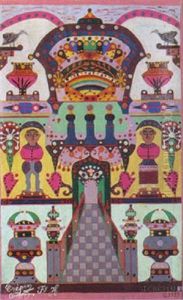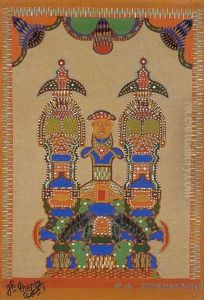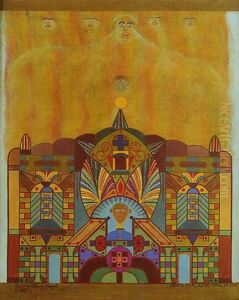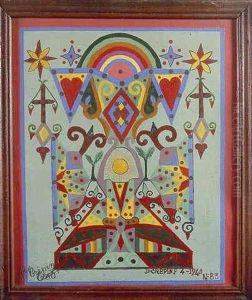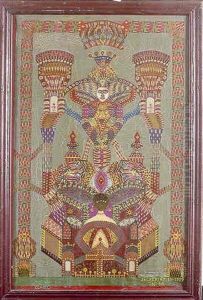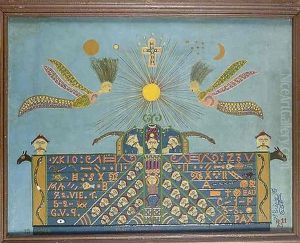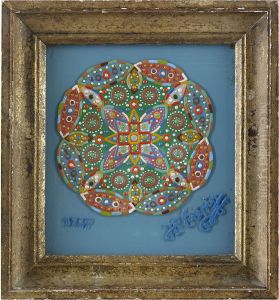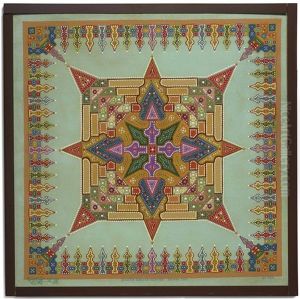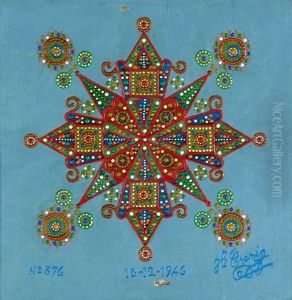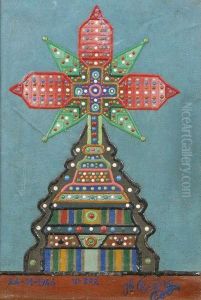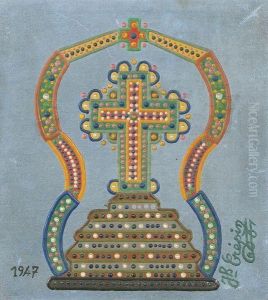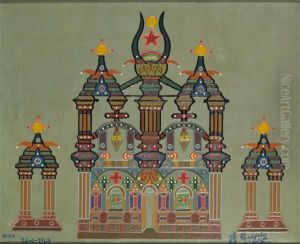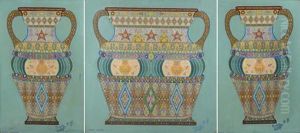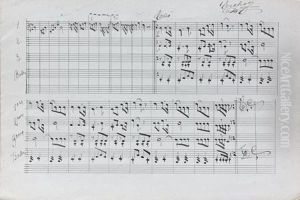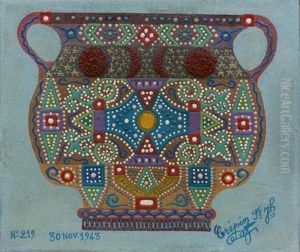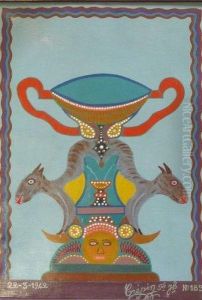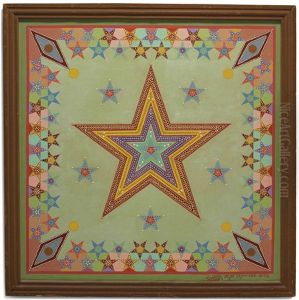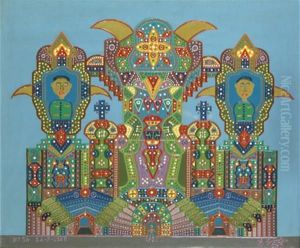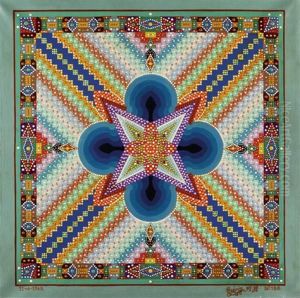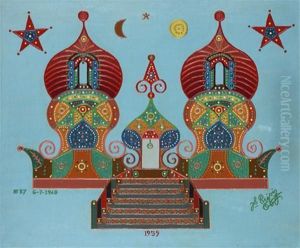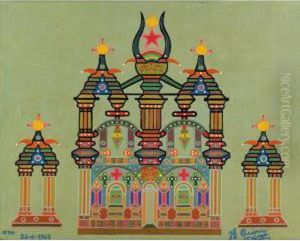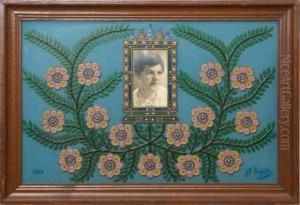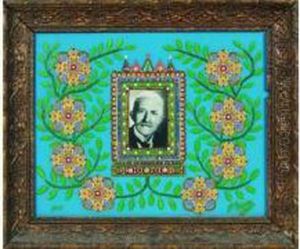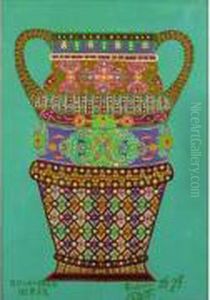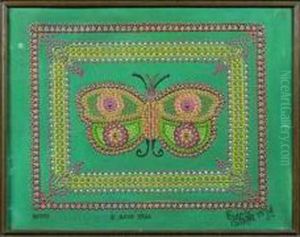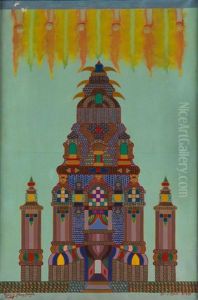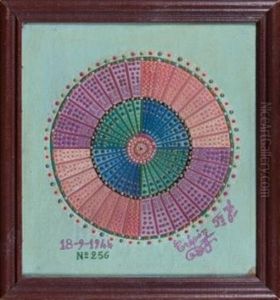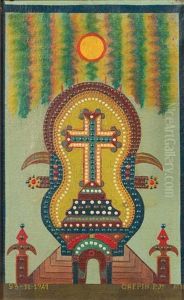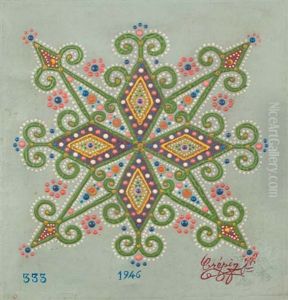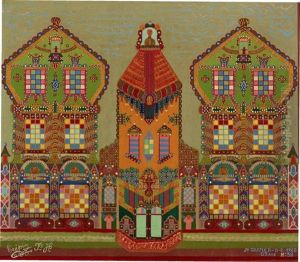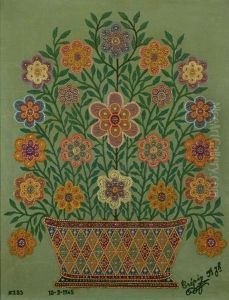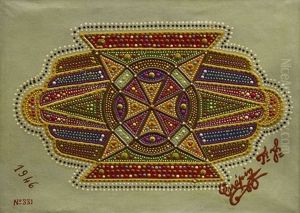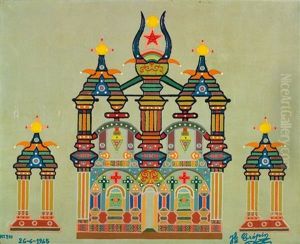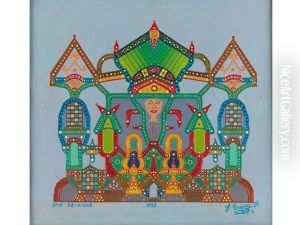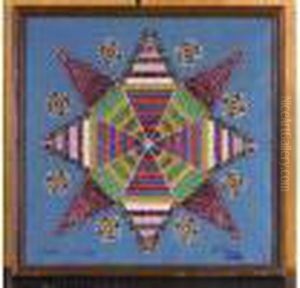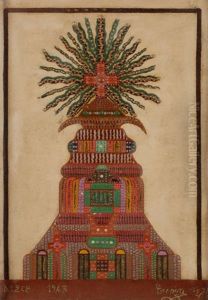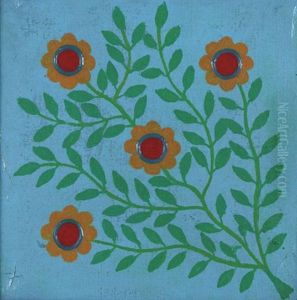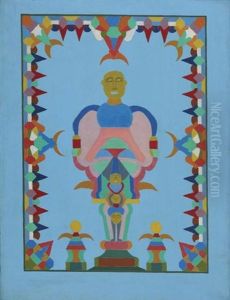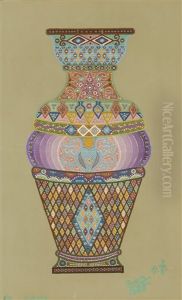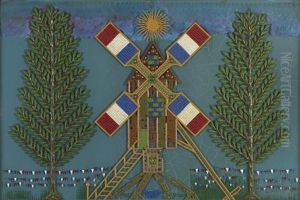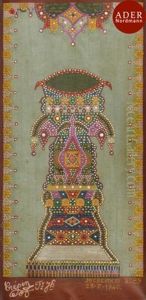Fleury Joseph Crepin Paintings
Fleury Joseph Crépin was born on October 17, 1875, in Nouvion-en-Ponthieu, France. He was a French artist known for his intricate and visionary works, often categorized within the Art Brut or Outsider Art movements. Before his foray into art, Crépin led a modest life, working primarily as a plumber and decorator, a trade that he learned from his father. His life took a significant turn after he retired in 1937, at which point he began to devote himself to painting, guided by what he believed were spiritual and divine inspirations.
Crépin's artworks are deeply influenced by his spiritual beliefs. He was a devout follower of the spiritism movement, particularly the teachings of Allan Kardec. This spiritual inclination is evident in his paintings, which are characterized by symmetrical compositions, mystical symbols, and elaborate architectural forms. Crépin claimed that his artistic creations were the result of communications with the spirit world, through which entities would dictate the subject and composition of his works.
Throughout his artistic career, Crépin produced over 300 paintings, many of which depict fantastical temples, palaces, and cities that he envisioned as representations of the afterlife or spiritual realms. His meticulous and detailed approach to painting, combined with his unique spiritualist perspective, has earned him a place among the notable figures in the Art Brut movement.
Crépin's work was relatively unknown during his lifetime outside of spiritist circles. However, his legacy began to gain recognition posthumously, particularly after Jean Dubuffet, a French painter and sculptor, discovered his work in the late 1940s. Dubuffet, who coined the term Art Brut (raw art) to describe art created outside the traditional boundaries of the art world, included Crépin's works in his collection of outsider art. This collection later became the foundation for the Collection de l'Art Brut in Lausanne, Switzerland, where Crépin's works are featured prominently.
Fleury Joseph Crépin passed away on July 11, 1948, in Nouvion-en-Ponthieu, leaving behind a body of work that continues to captivate and inspire audiences with its visionary and mystical qualities. Today, his paintings are celebrated for their originality and are considered important contributions to the field of outsider art, offering insights into the intersection of art, spirituality, and the human psyche.
